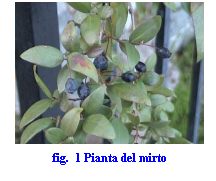|
INTRODUCTION
The history of Mirto is full of events requiring a precise
investigation to reconstruct the origin and the development, making use
of the documents, finds and monuments at our disposal.
Mirto is located between two valleys on the Fitalia river; and in this
place full of vegetation it is recognizable the persistent work of man.
It is rare that the sensibility of man is not captured by the charm of
this nature.
This feeling penetrates everyone coming to Mirto to discover its architectural
and historical aspects.
Its territory spreads for 900 hectares and the population reaches 1200
people.
Its position, behind deep valleys, let us suppose that the original site
existed in ancient times, for defending purposes.
The economy, strongly linked to the resources of the land, determined
its evolution over the centuries.
In early times, fruit, flax and hemp, were probably cultivated there,
as well as cattle breeding and silkworm-caterpillar were practiced.
Finally, Mirto was named from the characteristic myrtle plant, used for
many purposes, and important resource for the economy of the place. The
planting of orchards, olive tree, grapes, and mulberries for silkworm,
determined a change in the original vegetation, due to deforestation.
The first historical note about Mirto dates back to1398 when King Martino
" il giovane"(the young), yielded up his land to nobleman Angelotto
de l'Archan. Under the empire of Carlo V, the signory of Mirto, after
two previous passages, was acquired by the Family "Branciforte"
and then it returned back to the" Filingeri" that in 1643 became
princes of Mirto. The Filingeri stayed in Mirto In Summer time, and their
house belongs today to the families Pirrotti and Crisci.

|

